The 30: Four players seeking redemption in this week's power rankings
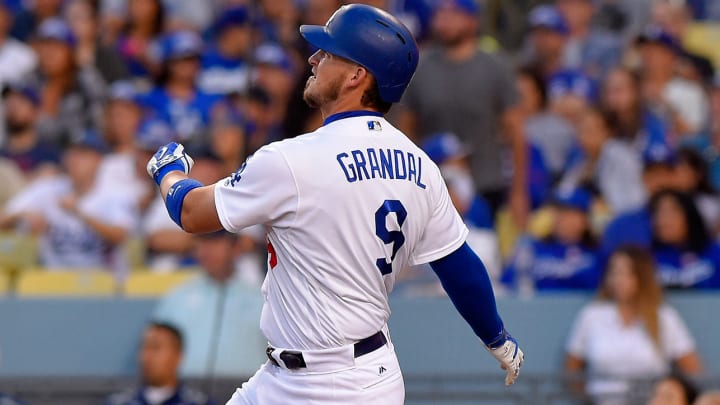
Few things get baseball fans more fired up than a good redemption story. When a player falls from grace or fails to live up to expectations, we look ahead to the second act, and that he can hopefully salvage that rough start. When that rebound happens, both player and team get to taste sweet vindication.
This week’s four featured teams all have redemption stories to tell. Cesar Hernandez has given the rebuilding Phillies another on-base and speed threat. Pirates pitcher whisperer Ray Searage has uncovered another hidden gem in Ivan Nova. Justin Upton has caught fire at just the right time for the surging Tigers. Yasmami Grandal’s power surge has propelled a Dodgers team that’s getting healthier and more dangerous.
The meek shall stop being meek, then inherit the Earth. It’s Week 23 of The 30.
Best Medical Miracle Not Enough People Are Talking About: Masahiro Tanaka
A torn ulnar collateral ligament is a brutal diagnosis for any pitcher. Thanks to the surgical skill of Dr. Frank Jobe and the courage of Tommy John 42 years ago, we have a surgery that gives pitchers a road map back to the mound. Still, that rehab process typically takes 12–18 months; it’s excruciatingly slow and tedious; and recovery is never guaranteed. But despite the difficulties presented by Tommy John surgery and its resulting rehab, it’s still a far more common option than rest or other less invasive procedures. Snap the ligament, go under the knife is usually the mantra.
Masahiro Tanaka is bucking that trend. Two years ago, the Yankees' righthander suffered a partial tear in his UCL. In spring training of 2015, he told reporters he planned to throw at less than full effort to preserve his injured arm. That statement evoked memories of Hall of Fame Christy Mathewson, who wrote in his book Pitching in a Pinch that he would take it easy every third time through the order, since the opposing team’s 7-8-9 hitters didn’t scare him. A century later, with the Dead Ball Era long gone and plenty of bottom-of-the-order hitters capable of blasting three-run homers at any moment, Tanaka’s claim was met with ample skepticism. Did this guy really think he could get batters out using guile, finesse and voodoo? And did he honestly think he could stay healthy while doing it?
Decision to pull Rich Hill during perfect game could pay dividends in October
The results are in, and the answer to both questions is: hell yes. Tanaka didn’t quite make it through all of last season intact, missing time with a wrist injury, but he fired 154 innings, struck out more than five batters for every one he walked and posted a 3.51 ERA. This year, he’s been even better. On Saturday, Tanaka shut down the Rays, tossing 7 1/3 innings of one-run, five-hit ball with 10 strikeouts and no walks. He’s done more than dominate doormats, too: On the season, he's punched out 160 batters and walked just 31. Tanaka now boasts a 3.04 ERA despite pitching his home games at Yankee Stadium, the short-porched ballpark that can terrify righthanded pitchers. Perhaps most impressively, he’s up to 186 2/3 innings, ranking fifth among all AL starters and showing no signs of wear and tear despite his UCL injury.
Pitching health is fleeting, so there’s no way to know how long this will last. But for right now, Tanaka’s excellence and continuing health rate as one of the best stories in baseball this year. For a Yankees team that’s beaten the odds and surged back into contention after trading away three of their best players, that’s great news.
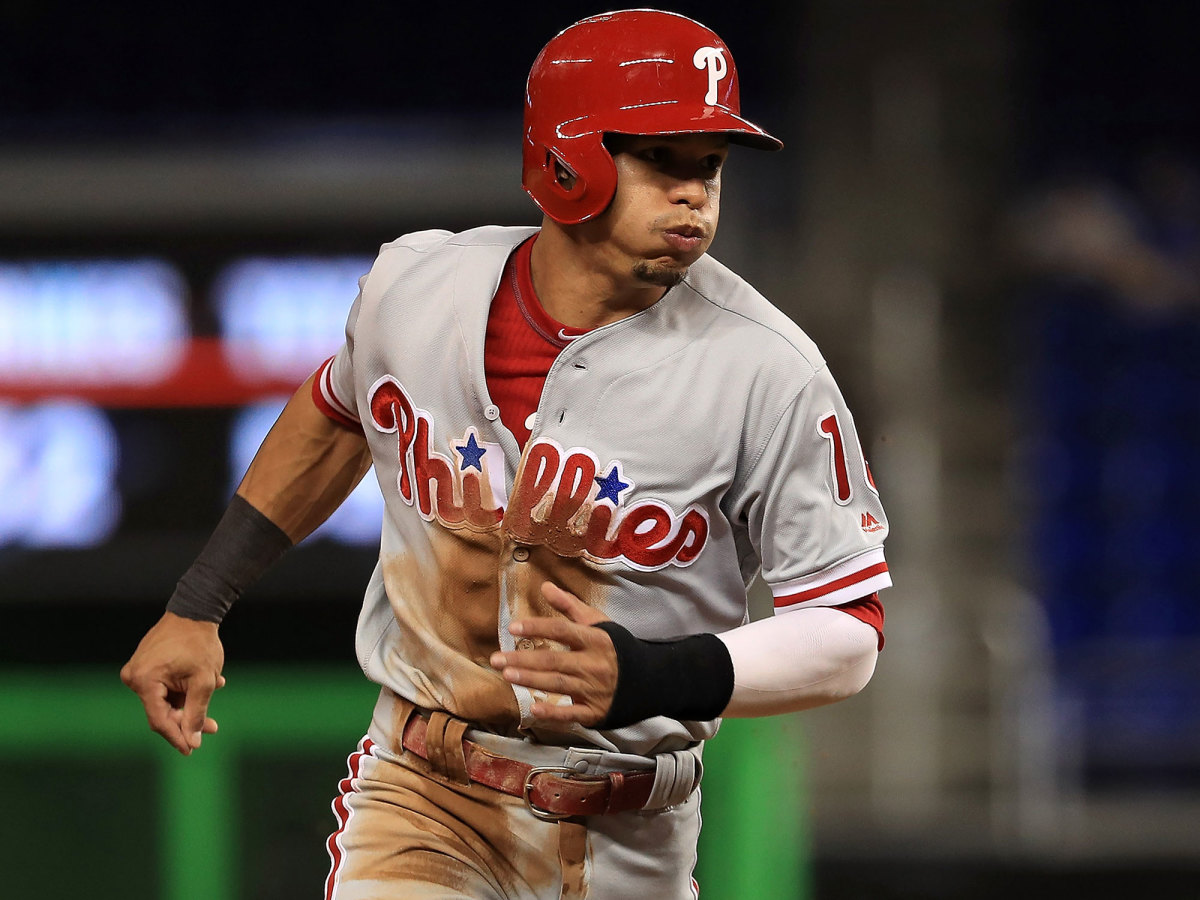
A Little Off The Top
Cesar Hernandez and Odubel Herrera offer top-of-the-order optimism for a rebuilding Phillies team.
30. Minnesota Twins (53–90 record, minus-145 run differential, last week: 30)
29. Atlanta Braves (55–88, minus-155, LW: 29)
28. Arizona Diamondbacks (58–84, minus-169, LW: 27)
27. Oakland A’s (60–82, minus-131, LW: 26)
26. Cincinnati Reds (60–82, minus-120, LW: 28)
25. San Diego Padres (59–84, minus-80, LW: 25)
24. Philadelphia Phillies (63–80, minus-155, LW: 24)
23. Tampa Bay Rays (60–82, minus-34, LW: 22)
22. Los Angeles Angels (63–79, minus-21, LW: 21)
22. Milwaukee Brewers (64–79, minus-64, LW: 23)
One-quarter of the way through the season, the Phillies’ rebuilding process looked like it might have sped up faster than anyone could have expected. At 24–17, Philadelphia held second place in the National League East and was just a half-game out of first, The young pitchers were the story, with talented righthander Vince Velasquez in particular dominating opponents. But the team’s unsung hero was an unlikely hitting star. Odubel Herrera opened his 2016 campaign by batting .333/.443/.458, drawing 29 walks and stealing six bases in his first 40 games. By flashing Chase Utley-like plate discipline and Jimmy Rollins-like speed and athleticism, Herrera looked like he could be as a vital, top-of-the-order threat.
Things haven’t gone nearly as well since. In his past 101 games, Herrera has batted just .252/.316/.379. The Phillies have fallen off sharply since then, too, going just 39–63. The rebuild might take some time after all.
It’s not all bad news, though. As Herrera and the Phillies have fallen off, another OBP-and-speed threat has emerged in their lineup.
Kershaw so-so in return, but Dodgers well-positioned with ace back on board
Cesar Hernandez started to show signs of life last season. After an lousy April, he hit .275/.341/.355 from then on, swiping 19 bases in 23 tries. He looked similarly lousy to start this year, batting just .245/.292/.324 through his first 60 games. Since then, he’s been on fire, batting .324/.403/.449 with 14 steals in 75 games. As with Herrera’s hot start, you can chalk up Hernandez’s success to an improved batting eye, with the second baseman swinging at fewer pitches out of the strike zone and swinging and missing less often.
Even in what might end up as another 90-loss season, you look for little signs of optimism. Hernandez and Herrera putting up .360 OBPs and stealing 40-plus bases between them at the top of the order for the next four years would be a solid building block for a franchise that still has some of its best talent blossoming in the minors.
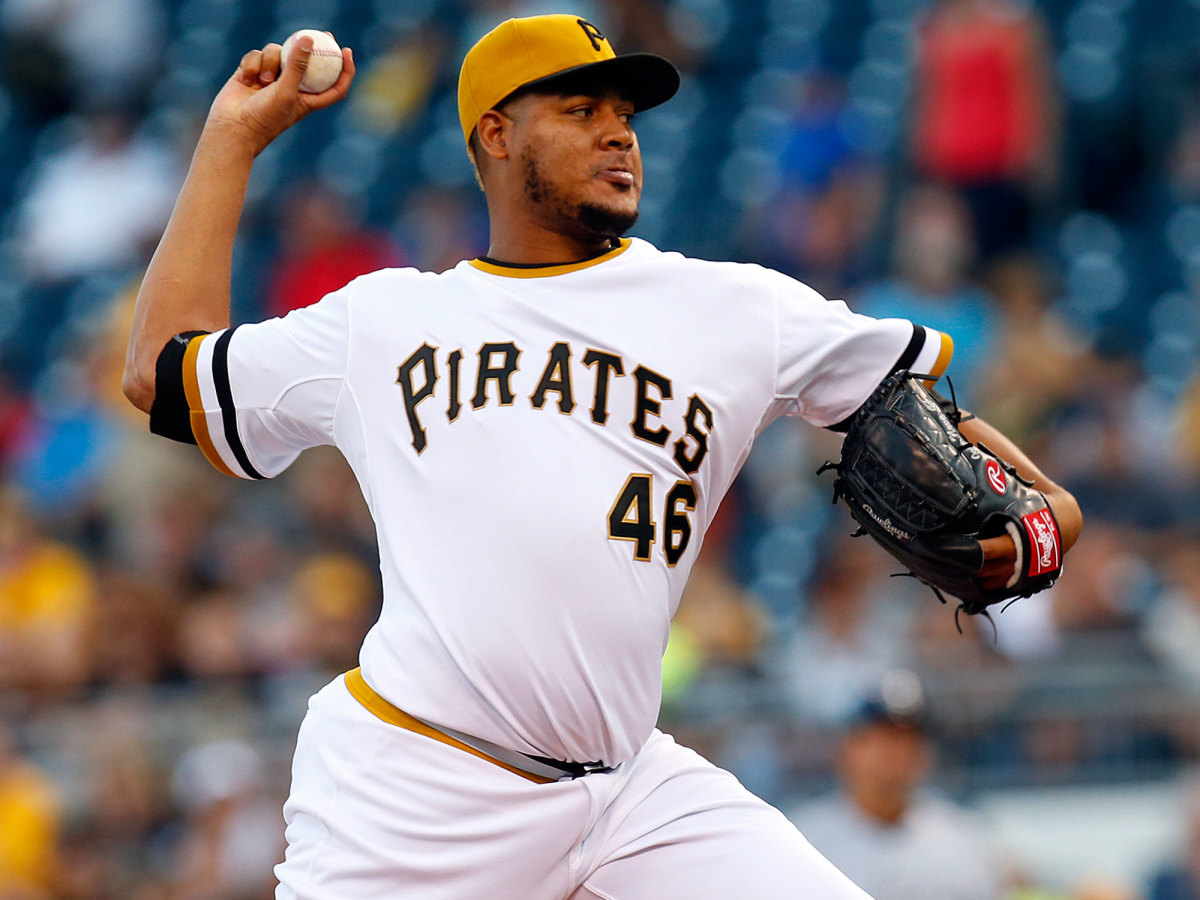
Ray of Hope
The Pirates nabbed another successful reclamation project in Ivan Nova, though probably too late to save their season.
20. Chicago White Sox (68–74, minus-34, LW: 20)
19. Colorado Rockies (69–74, plus-17, LW: 19)
18. Pittsburgh Pirates (69–72, minus-20, LW: 17)
17. Miami Marlins (71–72, minus-2, LW: 18)
16. Kansas City Royals (74–68, minus-6, LW: 15)
Few coaches get more credit than Pirates pitching coach Ray Searage does. From A.J. Burnett to Edinson Volquez, Francisco Liriano to Charlie Morton, Vance Worley to J.A. Happ, almost no one has seen more pitchers improve under his watch than has Searage. We can now add former Yankee Ivan Nova to that growing list.
When the Pirates arrived at the trade deadline this year, they hedged their bets. Sitting on the edge of the wild-card race and with no chance to catch the Cubs for the NL Central crown, Pittsburgh's brass realized the long odds the team faced to make the playoffs and the longer odds it would face to get to the World Series from there—three straight years of wild-card berths and early-October exits reinforced that point. So rather than sacrifice valuable young talent, the Pirates went the other way: With All-Star closer Mark Melancon two months from free agency, the Bucs flipped him to the Nationals for dynamic lefty reliever Felipe Rivero and big Class A southpaw Taylor Hearn, both of whom have flourished since the trade. Picking up Nova’s last two months before his own free agency—for little in return—was general manager Neal Huntington’s way to avoid overtly throwing in the towel.
The Pirates as a team have fallen flat, going 7–16 since Aug. 17 to knock them out of the race, but you can’t blame Nova for that shortfall. After posting a brutal 4.90 ERA in 97 1/3 innings as a Yankee this season, he’s nearly sliced that in half for Pittsburgh, posting a 2.53 ERA to go with a Clayton Kershaw-like strikeout-to-walk ratio: 32 punchouts and just two free passes in 46 1/3 innings.
Kershaw among key players in MLB's September postseason chases
Nova’s biggest weapon even during his toughest times as a Yankee was his curveball. In his three most recent seasons in which he threw significant innings (2012, '13 and '15), opponents batted just .166, .152 and .165, respectively, against Uncle Charlie. After struggling a bit with that pitch earlier this season, he’s back to limiting batters to results well below the Mendoza line since coming to the Pirates. The biggest difference so far in Pittsburgh, though, has been the success of Nova’s other pitches. As the analytical site Pirates Breakdown recently noted, Nova has been flooding the zone with first-pitch strikes over the past few weeks with all his pitches—four-seam fastball and sinker (as well as the curve) included. Get ahead in the count time after time, and you’re going to limit walks and get into lots of pitcher-friendly counts conducive to outs.
In a recent conversation with the New York Post’s Joel Sherman, Searage praised Nova for pounding the inside edge of the plate and for successful mechanical adjustments he’d made, including keeping his chin down during his delivery so his eyes can better stay on target toward home plate. We should probably allot some of the credit to non-Searage factors as well, such as the Pirates’ broader skill in preventing runs over the past few seasons, led in part by one of the most detail-oriented approaches to defense by any team in baseball.
With the Pirates all but out of it, the big question is whether or not other teams believe Nova’s improvement is for real and how much he’ll make this off-season, especially in a weak market for free agents. If Searage’s most recent reclamation project before Nova—2016 AL Cy Young candidate Happ—is any indication, the answers might be: yes, and a lot.
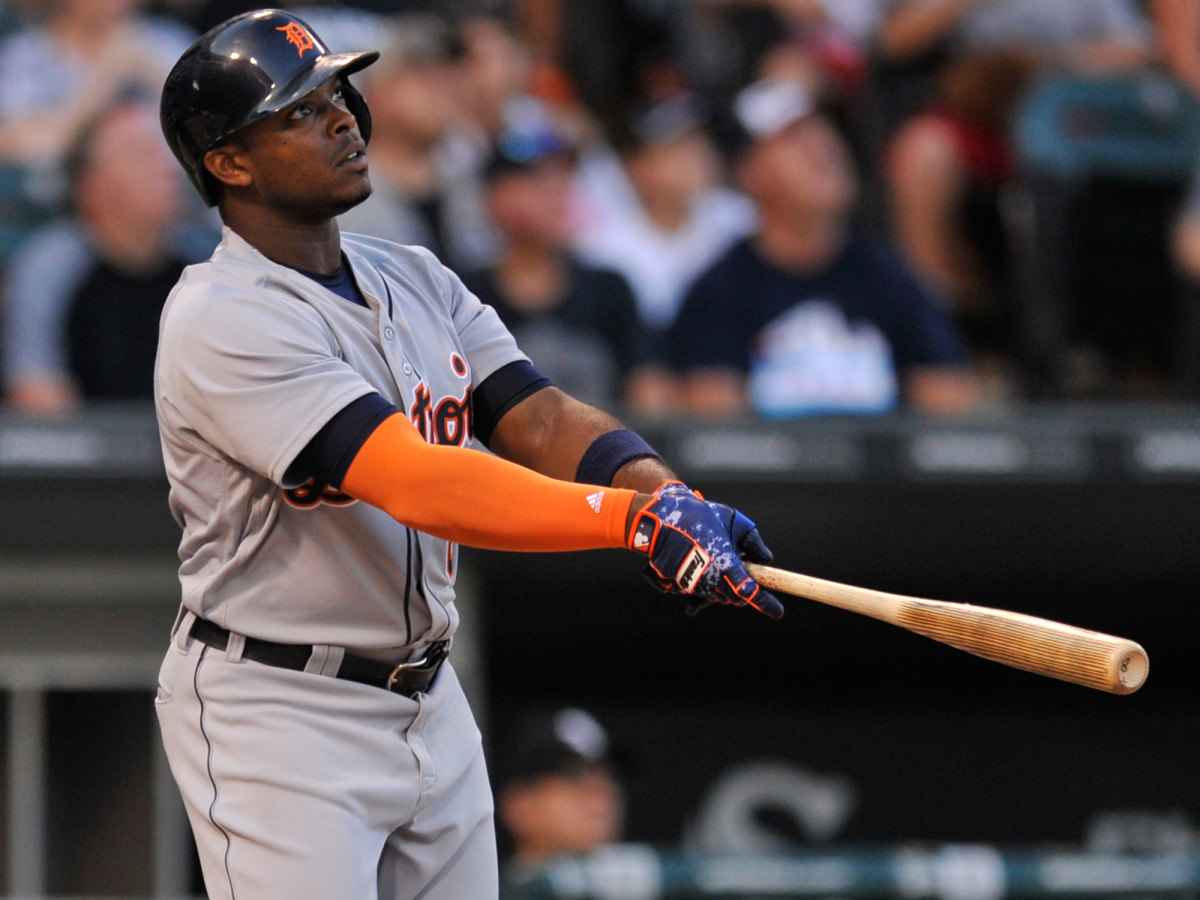
Upton Here
The Tigers’ big-ticket free agent has started mashing at just the right time.
15. Houston Astros (75–68, plus-38, LW: 10)
14. Seattle Mariners (75–68, plus-39, LW: 16)
13. New York Yankees (76–66, minus-7, LW: 14)
12. New York Mets (76–67, plus-28, LW: 13)
11. St. Louis Cardinals (75–67, plus-77, LW: 11)
10. Detroit Tigers (76–66, plus-11, LW: 8)
9. San Francisco Giants (77–65, plus-66, LW: 12)
8. Baltimore Orioles (78–64, plus-35, LW: 9)
7. Toronto Blue Jays (78–64, plus-84, LW: 5)
Six years, $132.75 million: That was the deal the Tigers and their notoriously spendy octogenarian owner Mike Ilitch threw at Justin Upton over the winter. That move—coupled with the five-year, $110 million contract they gave righthander Jordan Zimmermann—was meant to pump life into a Detroit team that won only 74 games last year.
The first two months of Upton’s tenure as a Tiger, however, were a disaster. The slugging outfielder hit like a poor man’s Madison Bumgarner over that span, batting just .217/.264/.326 with just three homers in 48 games. Not coincidentally, Detroit swooned right along with him, finishing the month of May at 24–27, mired in fourth place in the AL Central.
But Upton has picked up the pace since June, hitting .251/.315/.480 with 19 homers in 87 games. Move the timeline up to the past three weeks, and you get a monstrous performance: nine homers, 24 runs driven in and a line of .315/.390/.740.
Stephen Strasburg's MRI is good news for Nationals, but outlook still uncertain
Figuring out exactly what’s driven Upton’s turnaround is tricky. As Fangraphs' Corinne Landry wrote, there’s no one mechanical change or statistical marker that jumps out at you when looking at Upton’s exploits, other than a big jump in his exit velocity, which would seem to be more of a symptom than a cause for a player’s bounceback. Even at his best this season, Upton still lags behind some of his career numbers, most notably in walk rate. Essentially, he’s swinging for the fences, as he has all year—except now, it’s working.
Dig into Upton’s recent surge, and even after losing two out of three to the Orioles over the weekend, you get a Tigers team that’s on a 12–7 roll over that span. The crowded nature of the AL playoff hunt means Detroit still trails by two games in the wild-card standings, but the good news is that the schedule loosens up considerably from here. The Tigers do have seven games left with the front-running Indians and three with the frisky Royals, but their other 10 remaining games come against the two worst teams in baseball: the cellar-dwelling Twins and Braves, the latter in a three-game series to close out the season that could play a major role in deciding one of the wild-card spots.
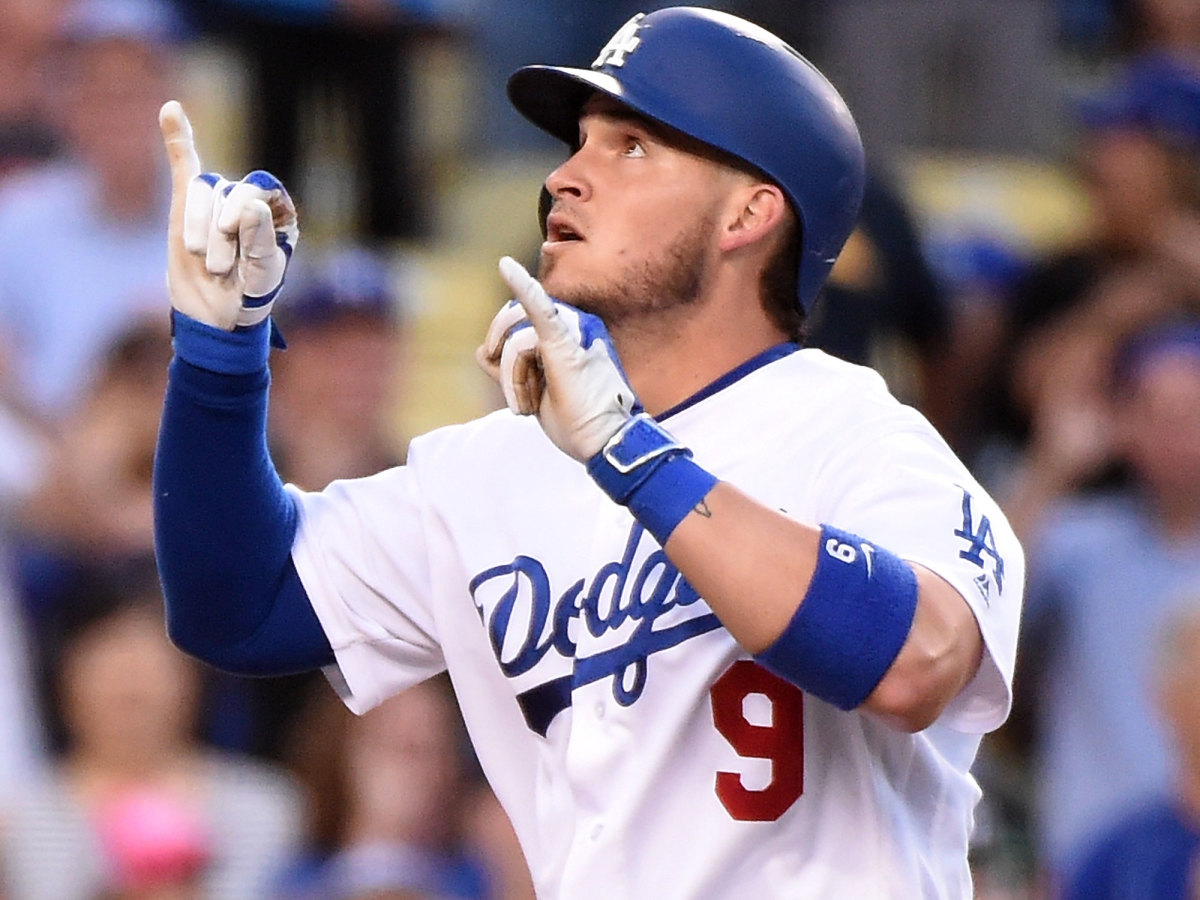
Catching On
Yasmani Grandal’s power binge has paced a balanced Dodgers team that might now get better.
6. Los Angeles Dodgers (80–62, plus-74, LW: 7)
5. Boston Red Sox (80–62, plus-163, LW: 6)
4. Texas Rangers (85–59, plus-21, LW: 3)
3. Cleveland Indians (83–59, plus-109, LW: 4)
2. Washington Nationals (85–58, plus-145, LW: 2)
1. Chicago Cubs (91–51, plus-226, LW: 1)
From the moment Zack Greinke signed with the Diamondbacks, critics have emerged with knives out for the Dodgers' front office. How could a team with seemingly unlimited resources and a payroll pushing $300 million by the end of last season possibly get outbid for a pitcher coming off a season in which he did a solid impression of peak Sandy Koufax?
By the time injuries and a red-hot Giants team dropped the Dodgers well off the NL West pace in July, the criticism intensified. Were Andrew Friedman, Farhan Zaidi and the other analytically-inclined people running the team being too cute for their own good with their Moneyball tactics? Were the Dodgers ever going to go and get the star they needed to get back in the race?
All of that criticism looks silly now. Greinke is already starting to look like a $206.5 million bust and still has five more years left on his deal. The Dodgers now hold a three-game lead in the West thanks to the Giants' putrid second half. And management’s plan to deploy youth, depth and data to their advantage now looks wise: 22-year-old shortstop Corey Seager has emerged as the team’s best position player and an MVP candidate, and a balanced roster is just three weeks from producing a fourth straight division title. All of that with the best pitcher on the planet having missed 2 1/2 months with a back injury.
In-depth look at why Cubs have all the ingredients to end World Series drought
Though the credit deserves to be divvied up into a whole bunch of parts, the emergence of Yasmani Grandal has played a big role in the Dodgers’ success. Unlike some of our other turnaround stories this week, he started the season on a high note, batting a robust .300/.440/.500 through his first 15 games. Then things got ugly: From April 30 to June 30, Grandal batted an abysmal .143/.243/.301. With Yasiel Puig slumping so badly he would eventually be demoted and multiple other Dodgers struggling, Los Angeles could ill afford to have its starting catcher coming up empty that often.
Then, everything turned. Since July 1, Grandal has been one of the most devastating hitters in the game, batting .273/.381/.622. As with Upton, Grandal has simply reverted back to old career norms: He’s still striking out in about one-third of his at-bats, but he’s now back to walking a bunch, and he's showing good pop for a catcher. The difference is the extent of that power: He’s now cranked 18 homers in his past 54 games—a 54-homer pace over a full season that has him tied for the major league lead in long balls by a catcher (with Evan Gattis).
You can find many more reasons for the Dodgers’ success beyond Grandal: A much improved bullpen; elite team defense; centerfielder Joc Pederson’s mini-breakout; a resilient starting rotation that’s endured more DL stints than any other team in the league but gotten much needed results from Kenta Maeda, Julio Urias and other pitchers from whom you wouldn’t have expected big things in 2016.
Worst of all for the Dodgers’ rivals, they didn’t take advantage of Clayton Kershaw’s summer-long injury and the hole that opened up in that starting five. Granted, the Dodgers' ace lasted just three innings in his first start back with the team on Friday. But if he can rebuild his stamina to the point that he’s even 80% of what he was earlier in the season, this becomes a dangerous team to face in October, when we’ll gain a little more insight into the value of depth in much smaller sample sizes than 162 games.
